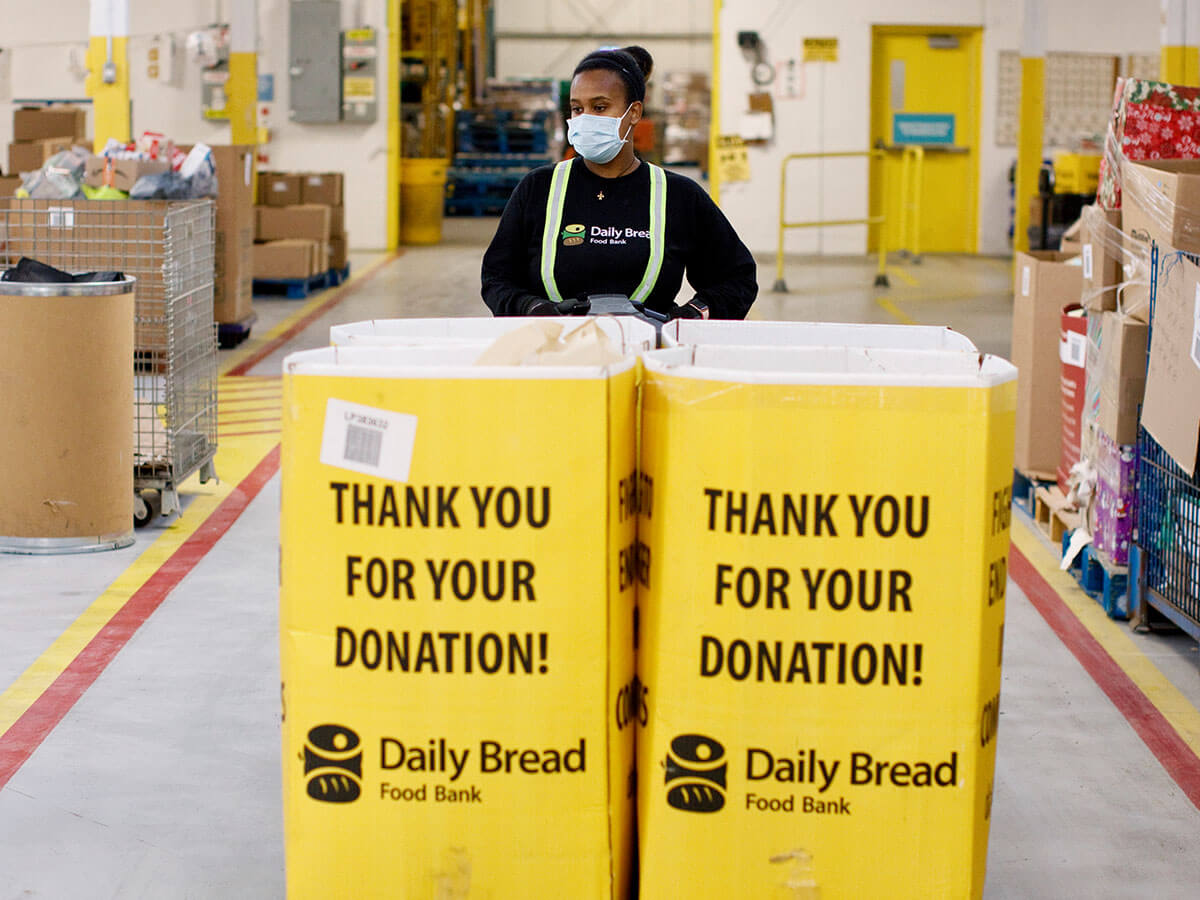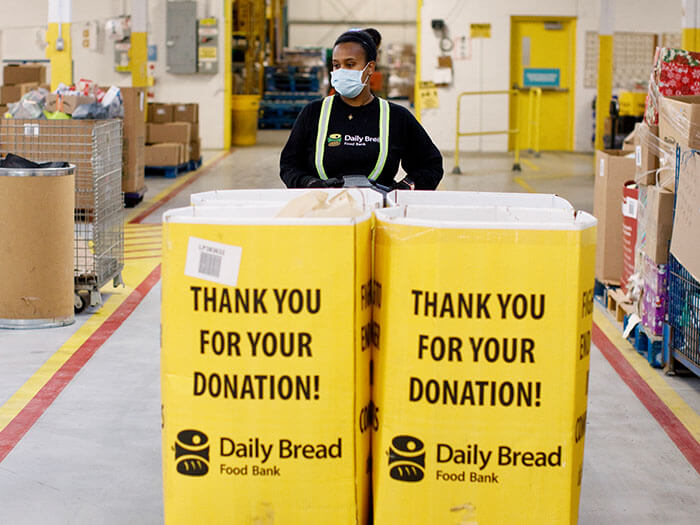
Canada’s busy food banks are a sign of economic unrest
 Toronto food banks had 1.45 million visits in the past year, a 47 per cent increase over the previous year (Photograph by Vanessa Heins)
Toronto food banks had 1.45 million visits in the past year, a 47 per cent increase over the previous year (Photograph by Vanessa Heins)
“I think I have the best job in Canada,” says Gretchen Daniels, CPA and CFO of the Daily Bread Food Bank in Toronto. “It’s everything that’s great about finance and accounting—it’s interesting and engaging, but you’re also dealing with something that really matters.”
Daniels’ enthusiasm is palpable and it’s especially remarkable given that she was offered a job at Daily Bread just before the pandemic began in 2020. It’s turned out to be the most demanding time on record for the food bank and many others across the country.
“We had 1.45 million visits to Toronto food banks this past year, which is the highest ever recorded in a 12-month period in the city. That’s a 47 per cent increase compared to the year prior and 1.5 times higher than the record set in 2010, which was the peak of impact for the 2008 recession,” she says.
And it’s not just an overall increase—a major indicator of economic unrest is a marked increase in new clients at food banks. This year at the Daily Bread, for the first time ever, the number of new clients outnumbered existing ones.
COVID-19 has exacerbated food insecurity in Canada and, while it may be its newest contributing factor, it’s far from the only one. Before the pandemic hit, a 2019 report from Food Banks Canada was already sounding the alarm. It pointed to rising food and other living costs, an increasingly unaffordable housing market in both urban and rural centres, and low and stagnant incomes.
In the meantime, the cost of food in Canada is expected to rise between five and seven per cent this year compared to 2021—that’s the largest increase ever predicted by Canada’s Food Price Report. Significant factors contributing to the unprecedented jump, according to the report, are pandemic-related supply chain issues, severe weather events like droughts and wildfires brought on by climate change, high inflation, transportation issues related to high oil prices and labour challenges in the food industry.
The report stressed that while some have been quick to blame the Canada Emergency Response Benefit (CERB) and other government supports for labour shortages that contribute to higher prices, the reality is much more complex. For one thing, the pandemic spurred many food industry workers—from restaurant workers to those along the supply chain—to find jobs in more stable or better-paying sectors. In large part, according to the report, the industry’s difficulty retaining workers—which predates the pandemic and its related income supports—comes down to low wages and few or non-existent benefits, physically demanding work and, now, a high risk of exposure to COVID-19.
“Many food banks in Canada fear they will not be able to accommodate a tidal wave of new clients created by the pandemic”
Food Banks Canada highlighted that CERB and other income supports led to a marked decline in the use of food supports; in March to June 2020, 53 per cent of food banks reported decreased use and 90 per cent cited government support as the primary reason. Of course, those supports have since dried up, leaving Canadians with the standard social assistance programs: general and disability-related welfare. Neither program has kept up with inflation, let alone food inflation and, in 2019, average annual welfare was more than $13,000 below the poverty line.
“The average real dollar value of the general welfare portion of provincial social assistance is about the same as it was 30 years ago,” Food Banks Canada’s 2021 report notes. “People who receive the disability portion of provincial social assistance, however, have seen the real value of their income decline by nearly 10 per cent compared to 30 years ago. And, while social assistance rates have declined in real dollars, food and housing costs have increased dramatically.” Worryingly, given the jump in new clients reported by food banks like Daily Bread, it seems that even Canadians who haven’t previously relied on social assistance are starting to feel the crunch.
Food Banks Canada recently released a set of policy recommendations, including increased support for low-income renters, low wage and unemployed workers and, perhaps most ambitiously, paving a path towards a minimum income—known elsewhere as a universal basic income.
“Many food banks in Canada fear they will not be able to accommodate a tidal wave of new clients created by the pandemic while maintaining their level of support for long-term need created by decades of social policy neglect,” the recommendations stated.
A few provinces over from Daily Bread, the situation is no better. Farhana Janmohamed, CPA and treasurer at the Calgary Food Bank, says her organization has also seen significant increases in demand; between 2019 and 2020, the number of hampers distributed per day nearly doubled. The bank extended daily service by four hours and added an extra day of distribution. “We’re also seeing more new clients and repeat demand, which is an indicator the economic conditions causing people to get hampers are persisting,” says Janmohamed.
This may all sound dire but, incredibly, Daily Bread expects the situation to worsen. That’s because the full impact of economic crises doesn’t hit right away; before people turn to food banks, they typically first burn through their cash reserves. Pre-pandemic, Daily Bread spent around $1.9 million purchasing food; this coming year, Daniels expects that number to increase by 200 per cent in the fiscal year. In Calgary, Janmohamed says that while the CERB led to a dip in demand, the food bank is now seeing demand higher than pre-CERB levels.
Bracing for impact, Daniels created a pandemic fund designed to help maintain service levels amid continued hard times. Janmohamed said that there’s been an increase in cash donations, which is somewhat helpful, since they’re more efficient—but, with in-person campaign events either on hold or significantly constrained, rallying support is harder than ever before.
“The pandemic has challenged us in ways that we never expected,” says Daniels. “But the biggest challenge is how to plan for the peak we know is coming.”
ECONOMIC IMPACT
Read about our country’s inflation problem and the related trend of shrinkflation. Plus, hear from CPA Canada’s chief economist about the economic challenges that lie ahead.